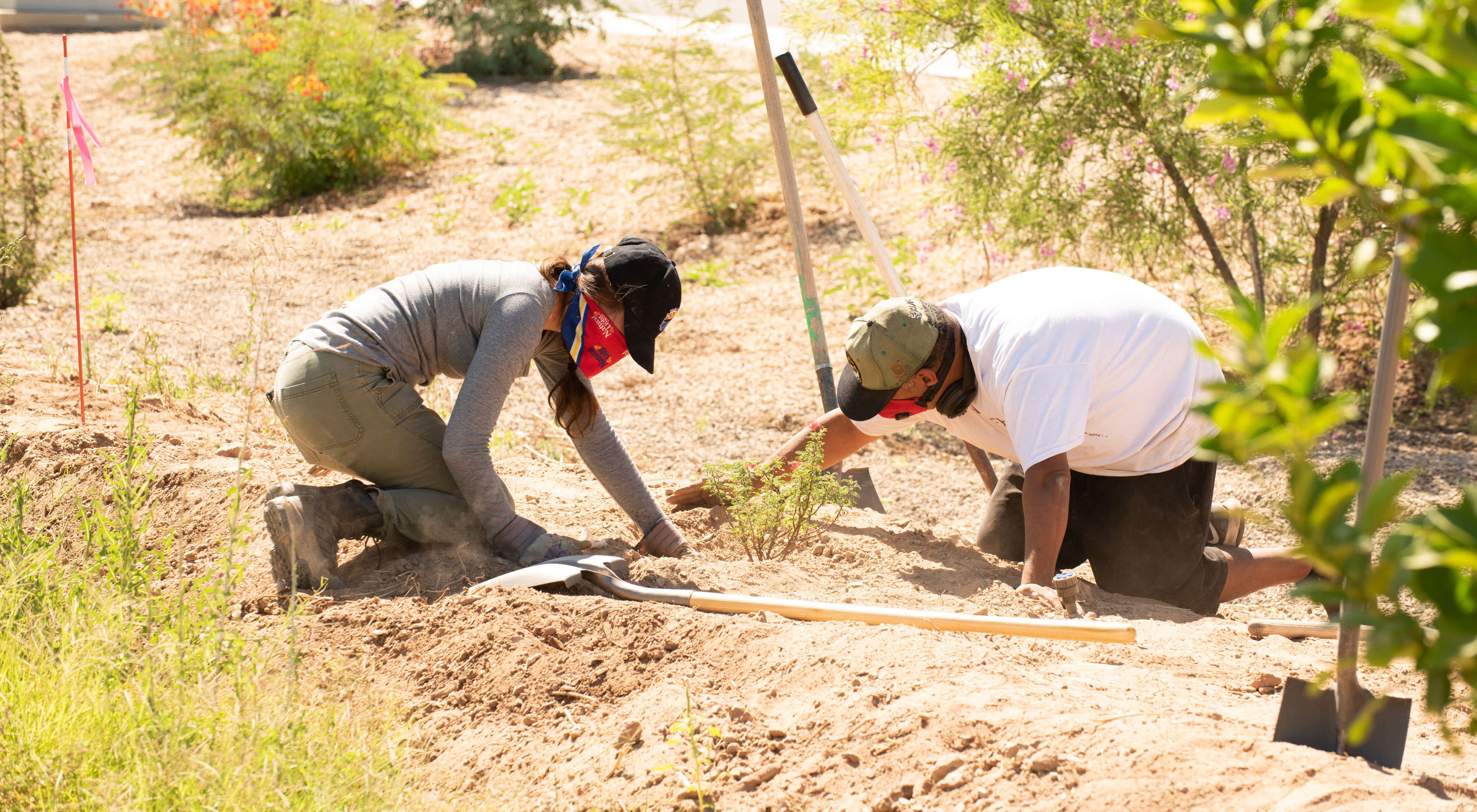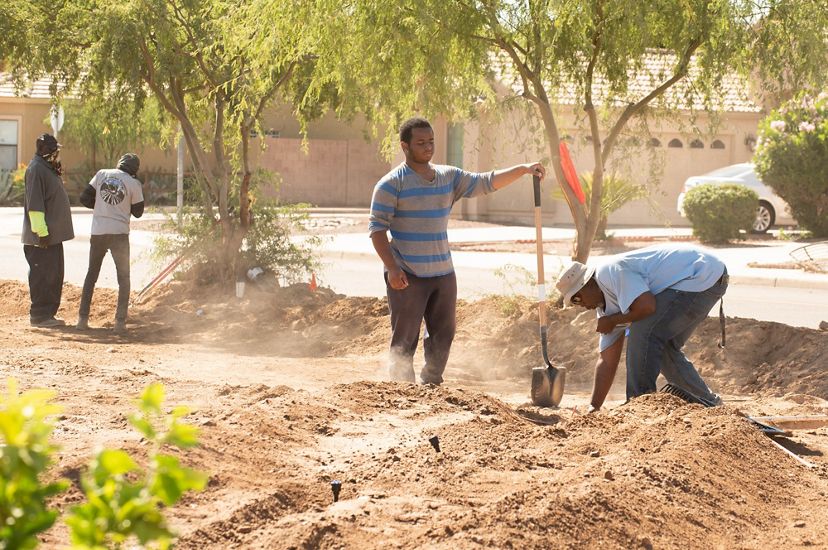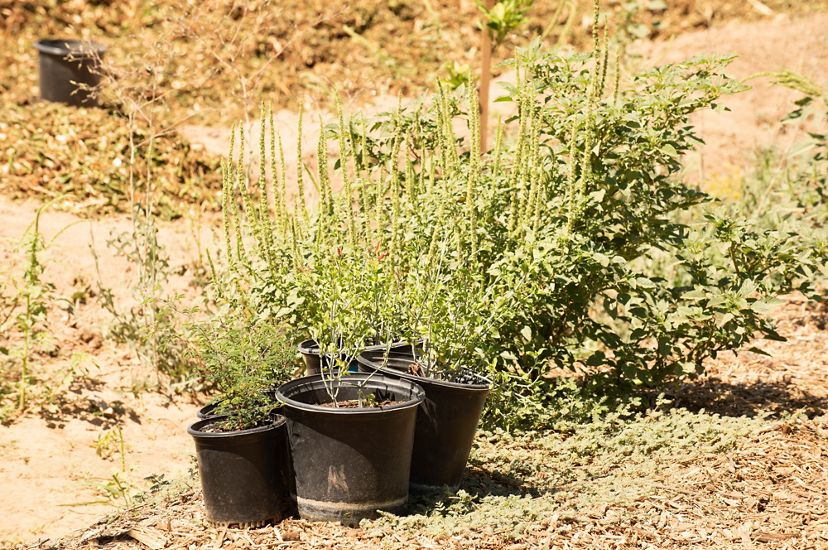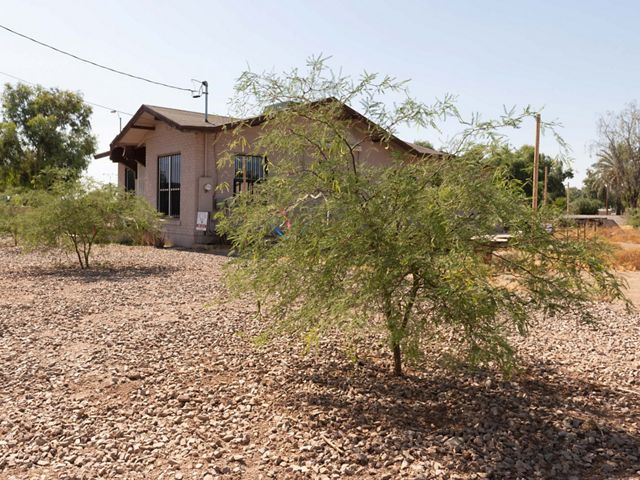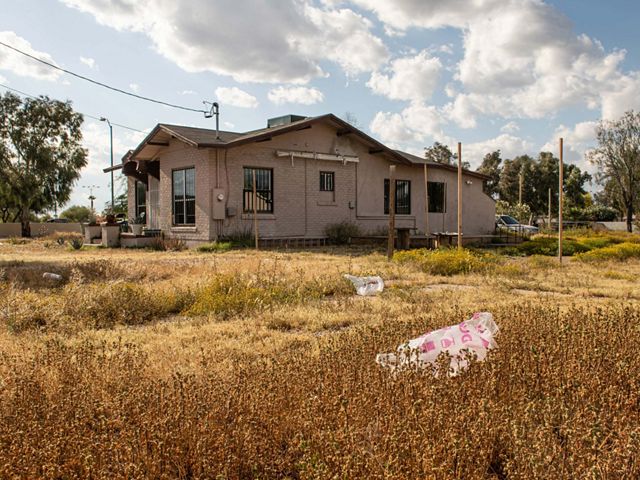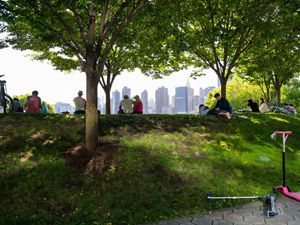Addressing Heat and Air Quality in Phoenix
Equitably building cool, healthy and climate-resilient cities.
StoryMap: Changing the Story of Heat in Metro Phx
As temperatures continue to rise in our country’s hottest large metro area, this web tool provides you with ideas to develop solutions to cool down your community. Hear perspectives from local residents, explore heat inequities, learn about solutions and discover tangible ways you can reduce urban heat at a personal, neighborhood and city level. English, Spanish.
In Phoenix, urban heat is impacting health, safety, comfort and economic development, and this is projected to worsen over time. The number of days above 110°F are expected to more than double by 2060. In 2023, the American Lung Association rated Phoenix the fifth most ozone-polluted metropolitan area in the country. With 60% of Arizona’s population concentrated around Phoenix, this constitutes a major public health concern—but one with solutions.

Community Matters
“I think one of the biggest feathers in my cap ever in my life has been the fact that I could actually work in the community where I grew up. So often when, as a young guy, people would say, you know what, man, I’m going to do well, and I’m going to leave the hood. Right. But in this particular case, we’re going to do well, and we’re going to stay right here. We’re going to keep this project going. We’re going to keep it maintained and we’re going to keep it looking beautiful for the next generation. So that is important.”
—Darren Chapman, TigerMountain Foundation
Empowering Communities: Urban Heat Leadership Academy
The first-of-its-kind Urban Heat Leadership Academy equips residents from the Phoenix Metro Area with the knowledge, resources and skills to advocate for more trees, cool walkable corridors and the use of rainwater for trees and vegetation in their communities.
Phoenix is the hottest metropolitan area in the country. Rising urban heat affects us all, but underserved communities are impacted the most. On some days, there are neighborhoods that are as much as 13 degrees Fahrenheit hotter than others. The hottest neighborhoods also have the least number of trees and the highest child poverty. Often residents in these neighborhoods may not be aware of the role that nature can play in reducing heat and improving quality of life. They may not have access to the resources needed to advocate for solutions or may not feel empowered to bring about change.
Listen to Phoenix residents’ observations about the day-to-day impact of heat in the city.
In this program, participants work with renowned experts to learn about sustainability challenges related to urban heat, air quality and water and get hands-on experience implementing solutions. They are also given the tools they need to mobilize their communities and make Phoenix cooler, greener and healthier.
Hear from Academy graduates
Economic Assessment of Heat in the Phoenix Metro Area
- Fact Sheet (.pdf)
- Full Report (.pdf)
First-of-Its-Kind Study in Phoenix
The goal of this study is to estimate the economic consequences to the Phoenix Metro Area from failing to take action against extreme heat and to evaluate the costs and benefits of solutions designed to address these consequences.
Engaging Neighbors in Heat Action Planning
The complete Heat Action Planning Guide, as well as the neighborhood-specific reports can be downloaded below.
TNC and partners led the Nature’s Cooling Systems Project, which included a participatory Heat Action Planning process in three metro-Phoenix neighborhoods disproportionally impacted by heat. The goals were to identify both mitigation and adaptation strategies to reduce heat and improve thermal comfort and quality of life for residents.
This collaborative effort was in partnership with Maricopa County Department of Public Health, Arizona State University’s Urban Climate Research Center and Urban Resilience to Extremes Sustainability Research Network, Central Arizona Conservation Alliance, Center for Whole Communities, Phoenix Revitalization Corporation, RAILMesa and Puente Movement.
Collectively the group launched a two-year participatory Heat Action Planning process in the Edison-Eastlake Community, Mesa Care Neighborhood and Lindo Park-Roesley Park Neighborhood.
Residents identified hot spots in their neighborhoods, areas where residents have experienced particular difficulty with the heat. They also brought forth ideas to increase their thermal comfort and safety during extreme heat days: adding shade to pedestrian corridors, redesigning bus stops to include relief from heat, and using water sustainably for cooling purposes.
But the effort is not just to identify ideas, but to help communities implement solutions.
The complete Heat Action Planning Guide in Spanish and English, the Executive Summary, as well as the neighborhood-specific reports can be downloaded below.
Download
Download the full Heat Action Planning Guide for Neighborhoods of Greater Phoenix.
DOWNLOAD En EspañolExecutive Summary
Neighborhood Guides
Making Phoenix Cooler, Greener and Healthier
Increasing tree and shade canopy cover by planting the right tree, in the right place and with the right water can reduce temperatures substantially. Not only are trees a cost-effective solution in mitigating heat, they provide valuable benefits including improving air quality, sequestering carbon, reducing storm water runoff, providing habitats for wildlife and promoting greater physical activity.
Here are some of the green interventions that The Nature Conservancy has worked with partners on over the past few years:

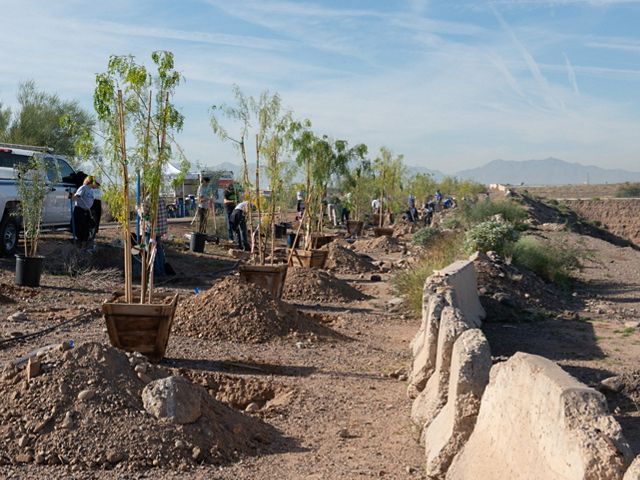
We Can’t Save Nature Without You
Sign up to receive monthly updates from Arizona. Preview a Natures News email.
